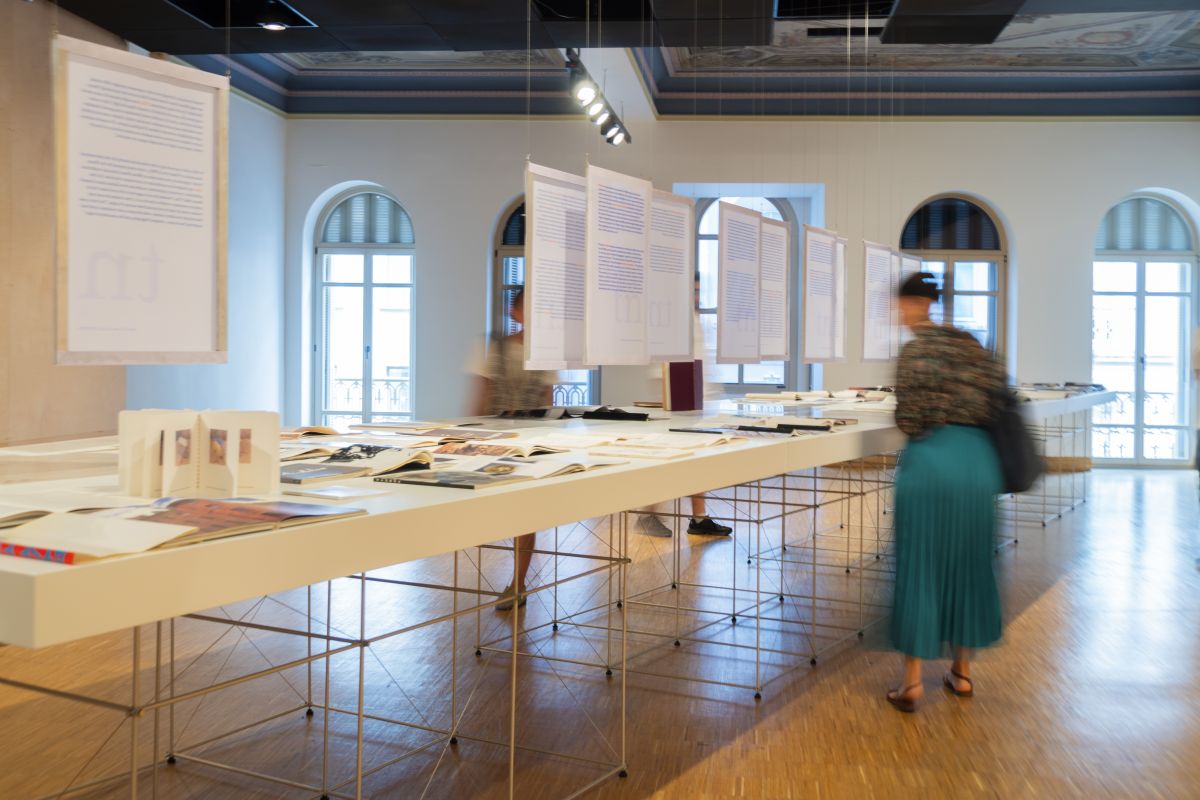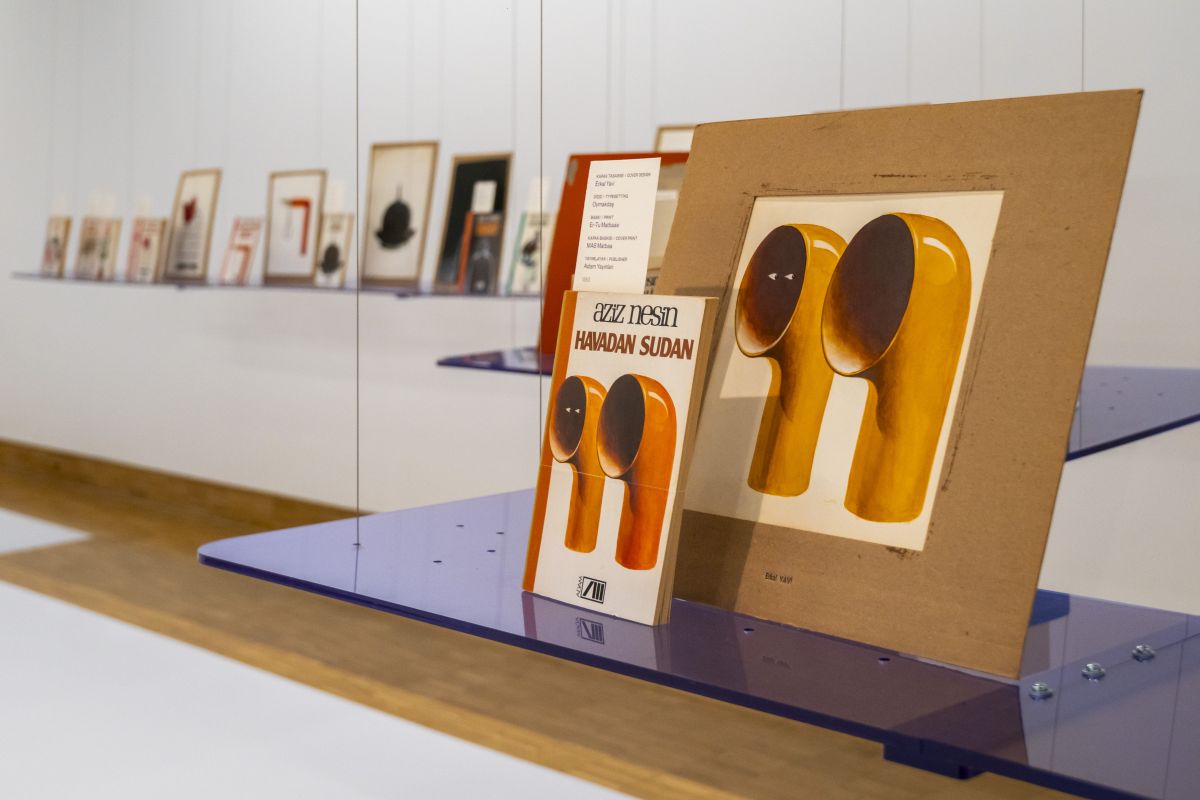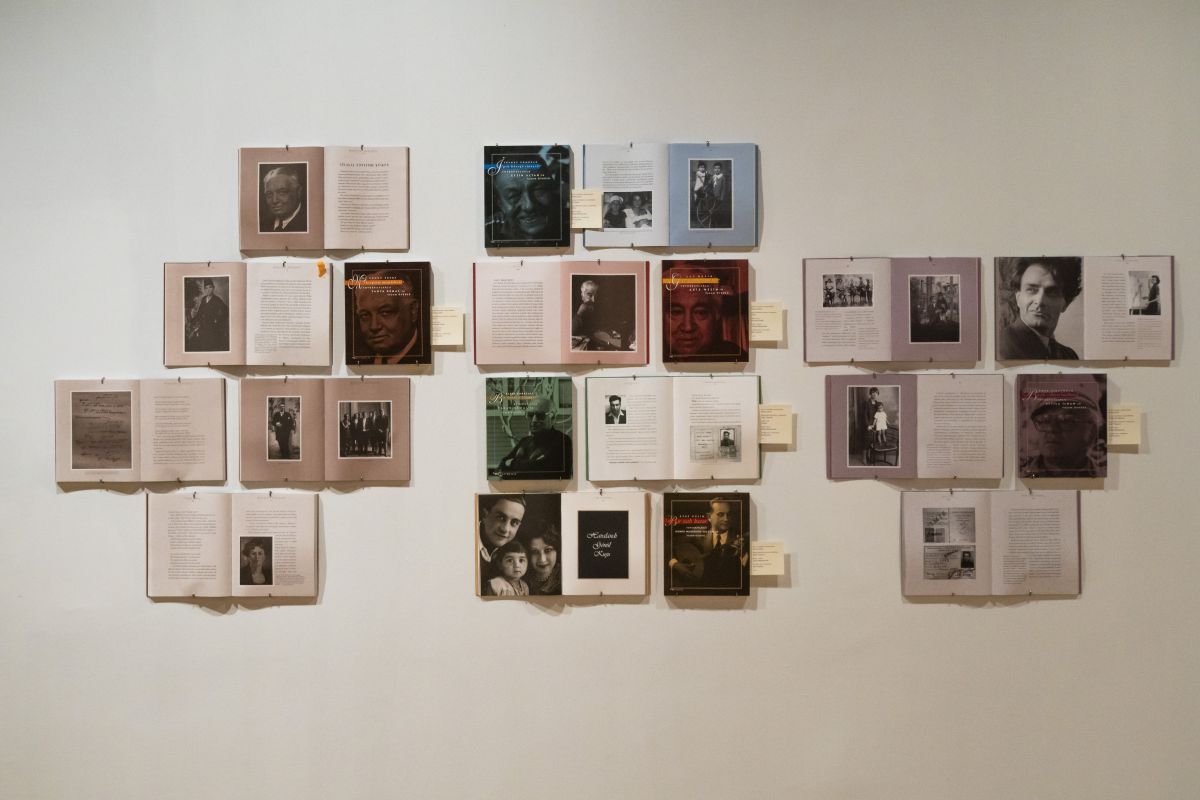Exhibition:
Designer's Note
Salt Beyoğlu
September 11, 2024 – February 2, 2025
Designer’s Note explores the rapid and profound evolution of graphic design in Türkiye during the late 20th century, focusing on a selection of books. The exhibition looks into a period when cultural publishing gained momentum, foregrounding the graphic designer as a key player. It spans from the 1970s, when the book cover was the primary design element, to the 1990s, when the book was conceived as an integrated design object.
The final quarter of the 20th century was marked by a series of political, economic, and social upheavals. The economic stabilization program enacted on January 24, 1980, paved the way for Türkiye’s integration into the global economy, and the September 12 military coup d’état set the stage for a neoliberal transformation. This had a profound impact on the cultural sphere. As the private sector showed growing interest in culture during the 1980s, new expansions occurred across various fields, including media, advertising, publishing, and contemporary art. While cultural life was disrupted in many aspects, this period also witnessed a dynamism fueled by the intellectual climate that the coup d’état sought to suppress, laying the groundwork for today’s cultural publishing.
During the 1980s, publishing rallied in both qualitative and quantitative terms and gained a new dimension as banks, conglomerates, and private companies embraced it as a prestigious endeavor. While certain books were banned due to their content and cover images, becoming symbols of dissent in the political climate of the time, they were also revalued as cultural commodities. This shift, driven by new understandings and formal propositions within the burgeoning cultural industry and competition, led to new communicative pursuits, underscoring the emergence of “graphic design” and the “graphic designer.”
These changes became particularly evident in book design during the 1990s. The rise of the graphic designer sparked discussions about their role within publishing and intellectual circles. It was not only private enterprises investing in books with high design quality; publishers of all sizes also adopted similar graphic standards, creating opportunities for designers to experiment with the conventional book format. The introduction of computers into the design process reduced reliance on specialized expertise at different stages of publication and bridged the gap between designers and the printing press.
Following these transformations, Designer’s Note explores the decision-making processes of designers in the creation of books, their interactions with various actors from publishers to printing houses, and their place in the cultural sphere. Extending from the third floor of Salt Beyoğlu to the Forum, the exhibition aims to highlight the often-overlooked role of designers as key contributors to the production of books. It offers insight into a pivotal period that set the stage for the design culture of the 2000s—when books were redefined as “printed” and “electronic”—through a collection of publications, interviews, and archival documents.
Designer’s Note is programmed by Eda Sezgin. Public programs accompanying the exhibition will be announced at saltonline.org and Salt’s social media channels.
Designers: Yurdaer Altıntaş, Serdar Benli, Savaş Çekiç, Gülizar Çepoğlu, Yeşim Demir Pröhl, Mustafa Eren, Aydın Erkmen, Bülent Erkmen, Ulaş Eryavuz, Cem Günübek, Joelle İmamoğlu, Sadık Karamustafa, Esen Karol, Sait Maden, Hakkı Mısırlıoğlu, Cemalettin Mutver, Nazlı Ongan, Nilgün Öneş, Ersu Pekin, Tibet Sanlıman, Alper Tunga Şen, İlhami Turan, Mehmet Ulusel, Timuçin Unan, Erkal Yavi
* * *
Program: Eda Sezgin
Program Coordinator: Tuğçe Kaplan, Gülce Özkara
Design and Production: Emirhan Altuner
Editor: Ezgi Yurteri
Translation: Öznur Karakaş, Merve Ünsal
Prepress: Hasan Yiğit Kaymakçı, Elif Tuna
Photography: Kayhan Kaygusuz, Alen Yahyaoğlu
Installation: Fiksatif, Eray Özcan, 3T Reklam
Communication Design: Fol
Contributors: Orkun Dayıoğlu, Seda Ertürk, Sinem Ayşe Gülmez Saydam, Defne Güzeldere, Mustafa Hazneci, Mümin Barış Korkmaz, Ahmet Metin Öztürk, Orhan Uslu, Zeynep Dila Sönmez
Acknowledgments: Kamer Altınova, İlhan Bilge, Ludmilla Büyüm, Nazar Büyüm, Ayşegül Coşkun and Hanife Yalçın (Akbank Sanat), Savaş Çekiç, Esra Melike Çuluk and Ayşe Gür (Millî Reasürans Sanat Galerisi), Bülent Erkmen, Uğur Eruzun (Robinson Crusoe 389 Bookstore), Sadık Karamustafa, Can Maden, Sarp Maden, İdris Özgül, STABILO, Lokman Şahin and Ufuk Şahin (MAS Matbaa), Sermet Tolan and Işık Yüceoral (Ofset Yapımevi), Tekin Yayınevi, Terminal, Ceylan Toraman, Murat Yılmaz
The exhibition is realized with the contributions of Eureko Sigorta and Jotun.
The final quarter of the 20th century was marked by a series of political, economic, and social upheavals. The economic stabilization program enacted on January 24, 1980, paved the way for Türkiye’s integration into the global economy, and the September 12 military coup d’état set the stage for a neoliberal transformation. This had a profound impact on the cultural sphere. As the private sector showed growing interest in culture during the 1980s, new expansions occurred across various fields, including media, advertising, publishing, and contemporary art. While cultural life was disrupted in many aspects, this period also witnessed a dynamism fueled by the intellectual climate that the coup d’état sought to suppress, laying the groundwork for today’s cultural publishing.
During the 1980s, publishing rallied in both qualitative and quantitative terms and gained a new dimension as banks, conglomerates, and private companies embraced it as a prestigious endeavor. While certain books were banned due to their content and cover images, becoming symbols of dissent in the political climate of the time, they were also revalued as cultural commodities. This shift, driven by new understandings and formal propositions within the burgeoning cultural industry and competition, led to new communicative pursuits, underscoring the emergence of “graphic design” and the “graphic designer.”
These changes became particularly evident in book design during the 1990s. The rise of the graphic designer sparked discussions about their role within publishing and intellectual circles. It was not only private enterprises investing in books with high design quality; publishers of all sizes also adopted similar graphic standards, creating opportunities for designers to experiment with the conventional book format. The introduction of computers into the design process reduced reliance on specialized expertise at different stages of publication and bridged the gap between designers and the printing press.
Following these transformations, Designer’s Note explores the decision-making processes of designers in the creation of books, their interactions with various actors from publishers to printing houses, and their place in the cultural sphere. Extending from the third floor of Salt Beyoğlu to the Forum, the exhibition aims to highlight the often-overlooked role of designers as key contributors to the production of books. It offers insight into a pivotal period that set the stage for the design culture of the 2000s—when books were redefined as “printed” and “electronic”—through a collection of publications, interviews, and archival documents.
Designer’s Note is programmed by Eda Sezgin. Public programs accompanying the exhibition will be announced at saltonline.org and Salt’s social media channels.
Designers: Yurdaer Altıntaş, Serdar Benli, Savaş Çekiç, Gülizar Çepoğlu, Yeşim Demir Pröhl, Mustafa Eren, Aydın Erkmen, Bülent Erkmen, Ulaş Eryavuz, Cem Günübek, Joelle İmamoğlu, Sadık Karamustafa, Esen Karol, Sait Maden, Hakkı Mısırlıoğlu, Cemalettin Mutver, Nazlı Ongan, Nilgün Öneş, Ersu Pekin, Tibet Sanlıman, Alper Tunga Şen, İlhami Turan, Mehmet Ulusel, Timuçin Unan, Erkal Yavi
Program: Eda Sezgin
Program Coordinator: Tuğçe Kaplan, Gülce Özkara
Design and Production: Emirhan Altuner
Editor: Ezgi Yurteri
Translation: Öznur Karakaş, Merve Ünsal
Prepress: Hasan Yiğit Kaymakçı, Elif Tuna
Photography: Kayhan Kaygusuz, Alen Yahyaoğlu
Installation: Fiksatif, Eray Özcan, 3T Reklam
Communication Design: Fol
Contributors: Orkun Dayıoğlu, Seda Ertürk, Sinem Ayşe Gülmez Saydam, Defne Güzeldere, Mustafa Hazneci, Mümin Barış Korkmaz, Ahmet Metin Öztürk, Orhan Uslu, Zeynep Dila Sönmez
Acknowledgments: Kamer Altınova, İlhan Bilge, Ludmilla Büyüm, Nazar Büyüm, Ayşegül Coşkun and Hanife Yalçın (Akbank Sanat), Savaş Çekiç, Esra Melike Çuluk and Ayşe Gür (Millî Reasürans Sanat Galerisi), Bülent Erkmen, Uğur Eruzun (Robinson Crusoe 389 Bookstore), Sadık Karamustafa, Can Maden, Sarp Maden, İdris Özgül, STABILO, Lokman Şahin and Ufuk Şahin (MAS Matbaa), Sermet Tolan and Işık Yüceoral (Ofset Yapımevi), Tekin Yayınevi, Terminal, Ceylan Toraman, Murat Yılmaz
The exhibition is realized with the contributions of Eureko Sigorta and Jotun.




